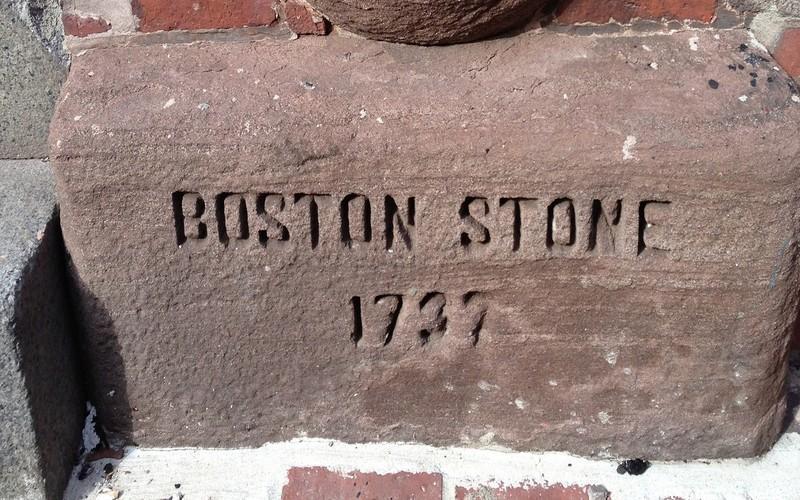
What Is The Real Story Behind The Mysterious Boston Stone?
Share
Faneuil Hall is home to some of Boston's oldest original buildings dating back to the colonial era. If you have spent time walking the area's cobblestone streets, you may have noticed a strange rectangular stone embedded in the foundation of 9 Marshall Street.
It is about two feet in diameter and reads simply, "Boston Stone 1737." There are several theories as to its true significance, but no one knows for sure how or why it is there.
Theory One: The stone was imported from England by Thomas Childs.
Childs operated a paint mill on the site and was said to have brought the stone over from England in the year 1700. It was purportedly used to grind pigments for his paints until his death in 1706. The stone then became lost until 1836 when the paint mill was demolished. The stone is said to have been discovered during the excavation and mortared into the base of the new building with the simple inscription.
Theory Two: The stone marks the geographic center of Boston.
Some sources claim the stone was once used by local surveyors to measure distances to the city from outlying points. This theory compares the Boston Stone to the equally mysterious London Stone which was allegedly used in the same manner during Roman times. The problem is the majority of the area's mile markers are based on their distance to the Old State House, not the Boston Stone.
Theory Three: A greedy merchant created a fake landmark to drum up business.
The Boston stone may have no significance other than as a reminder to watch out for shady business practioners. Some say a Marshall Street merchant created the marker in an attempt to increase traffic to his shop with a phony landmark.
No matter which theory you believe, the significance of the year 1737 remains a mystery.
Nowadays there is a gift shop in the brick building at 9 Marshall Street named for the stone. Visitors to the Boston Stone Gift Shop can pick up a souvenir and check out the mysterious landmark for themselves.
Featured Image via Flickr/ J Chay (Creative Commons)
